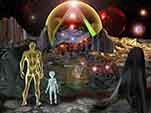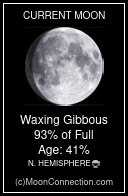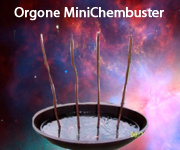Edgar Cayce calls the Eruption of Mt. Pelee on the Island of Martinique, the beginning of the End. Please not the enormous amount of volcanic activity located near it on the sea floor. I can see why such significance should be attached to it.
http://www.ldeo.columbia.edu/~mwest/scrap/pelee/
Pelee, Martinique, West Indies
Eruption Style and History
The Pelee edifice has been volcanically active for 400,000 years. Its history includes the
formation of multiple craters in close proximity to one another. Most assessments of volcanic
hazard are based on the last 5000-6000 years. The stratigraphy for this period is accessible
and has been well studied. Eruptions of Mt. Pelee alternate between dome
growth-and-collapse (Pelean) and open crater pumice and ash flows (Plinian).
Stratigraphically the two major styles have created alternating layers of dense andesite
deposits and pumiceous deposits respectively. There have been 25 such alternations in the past
6000 years. There does not appear to be a correlation between the chemical composition of
the deposits and the eruptive style. This suggests that gas content plays a key role. Volitile-rich
magmas would erupt in Plinian activity while less volatiles would result in Pelean activity. For
both styles, some eruptions commence with violent explosions while others are more effusive.
Westerncamp and Traineau (1983) propose four total types of eruptions. They relate the
presence or absence of initial explosive activity to the amount of meteoric water encountered
near the surface.
Chemistry and Magma System
**Chemistry of products ??**
Two magma chambers are proposed based on geochemistry. In the proposed model, basaltic
magma is fractionated in a lower (20-15 km) chamber to produce basaltic andesite and
cumulates. This lower density magma could then rise to a higher chamber (13-10 km) where
further fractionation creates andesites and dacites. The chemistry of this upper chamber varies
systematically with time in a cycle separate from the eruptive style. Influxes of basaltic
andesite magma into the upper chamber are likely to produce a density layered chamber
with andesite magma at the top.
The introduction of new basaltic andesite magma into the upper chamber is thought to
result in explosive Plinian eruptions of low-silica andesite. The last such eruption was 2200
years ago. Subsequent Plinian eruptions have had lower volume and extent separate by
Pelean activity. Recent activity has been strictly Pelean. This implies that the last recharge of
the upper chamber occurred 2200 years ago. The extrusion of gas-poor magmas in Pelean
eruptions should continue until the chamber is recharged.
Local Seismicity
The seismicity of Pelee was addressed by Hirn et al. A temporary upgrade of the array in 1985
allowed shallow seismicity directly under the volcano to be observed. The array consisted of ~8
stations. They were able to locate events but focal mechanisms were not produced.
Frequency analysis of shallow events showed that, despite their small magnitude, these events
do not have high corner frequencies. This could indicate a volcanic as opposed to tectonic
source. However, the lack of strong high frequencies could also be due to attenuation near
the volcano.
Regional seismicity is moderate to low. Passive seismic studies would require long deployment.
Notes and Questions
What has been done seismically since 1987? The observatory web page indicates that
seismicity has been monitored closely but no array information is given and no
references can be found. Hirn did not respond to emails concerning recent work.
Could the two magma chamber model be confirmed via tomography?
Given the presence of shallow events, could current locus of activity be determined and
would this have an impact of hazard mapping?
Selected References
~mwest/antilles
Mt. Pelee, GSA Memoir 175, 1990
Westercamp and Traineau, The Past 5000 Years of Volcanic Activity at Mt. Pelee:
Implications for Assessment of Volcanic Hazards, JVGR, 17 (1983) 159-185
Hirn et al., Shallow Seismicity at Montagne Pelee Volcano. Bull. Vol. (1987) 49:723-728
JVGR, 38 (1989) Entire Issue
http://www.hcrhs.hunterdon.k12.nj.us/science/class.html
Classes of Volcanoes
Go Back to Plate Tectonics
Volcanoes are classified under three categories
Shield or Lava Cone
Cinder Cone
Composite Cone
Shield or Lava Cone
Also called quiet or non-explosive, these are formed when great masses of lava quietly ooze
out from an opening in the earth's crust. The thick lava which forms these volcanoes spread
out from the hole to form a broad, gently sloping cone. The oval, cup-shaped opening, called
a crater, has a diameter of approximentally three miles.
The Hawiian volcanoes, Mt. Loa and Kilauea are some examples. The base of Mt. Loa is so
broad that the slope is only 5 degrees.
Go to Cinder Cones
Go to Composite Cones
Go to top of Volcano Classes
Cinder Cone
These explosive volcaoes are formed when huge blocks or rock, volcanic bombs, cinders, and
ash are hurled out of an erupting volcanoand pile up on the earth's surface. Pressure from
gasses below the surface cause weakened areas oir the crust to open. The, the sudden release
of gasses causes an erruption.
Unlike the lava cones, cinder cones can reach altitudes of 15,000 feet or more above sea level
and have up to 35 degree angles.
Some famous cinder cones:
Krakatoa, in Indonesia
Paricutin, in Mexico
Mt. Pelee, in Martinique
Go to Composite Cones
Go to Shield or Lava Cones
Go to top of Volcano Classes
Composite Cone
These consist of both lava and cinder cones. There are alternating layers of lava and cinders
which indicate that these were formed by both quiet and explosive erruptions.
A composite cone appears steeper than a lava cone, yet has a gentler slope than a cinder
cone.
Some famous cinder cones:
Mt. Vesuvius, in Italy
Mt. Fujiyama, in Japan
Popocatepeti, in Mexico
Mt. Rainer, in Washington
Go to Composite Cones
Go to Shield or Lava Cones
Go to top of Volcano Classes






































